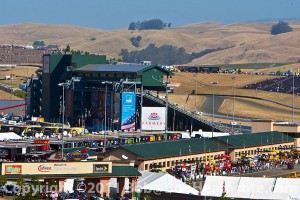In one month time Auto GP will start the engines in Sonoma for the first North American race in its history. The event will take place on the recently renewed 12 turns layout, the same that IndyCar will put to the test the coming weekend holding their Grand Prix. Modifications were carried out in three spots, in each case aiming to improve the show giving the drivers more room for overtaking: the entrance into Turn 11 has been extended by 60 meters before drivers encounter the hairpin, giving them more space to out-brake each other and set-up a passing opportunity before the right-hander into Turn 12. The exit of Turn 9 has been widened by 3 metres on drivers’ left, giving competitors additional width in what was already a passing zone. At Turn 7, instead of the looping right-hander, drivers will now encounter a u-turn. The new turn will force drivers to out-brake each other, similar to Turn 11, and create an overtaking zone. As IndyCar will race on the updated track just one month before Auto GP, the American round will be a good chance to understand where Auto GP stands in terms of performance when compared to the top level of USA single-seater racing. Besides this, the Sonoma round will mark another very interesting milestone: Auto GP will indeed be the only high-power single-seater series to have ever raced at the Infineon Raceway apart from IndyCar. If you’re interested in more Sonoma facts, here are some:
• The track was built in 1968. The first official event at Sears Point Raceway was an SCCA Enduro held on Dec. 1, 1968.
• The first single-seater race held on the circuit was a 150-mile USAC IndyCar road race, won by Dan Gurney and with a field that included Mario Andretti, Mark Donahue and Al Unser.
• After that event, no major open-wheel race was held in Sonoma for 35 years. The long stop was broken by the IRL Grand Prix in 2005.

• The road course features 50 meters of elevation change from its highest to lowest points. The highest point at Turn 3 reaches 54 meters, while the lowest point at Turn 10 is just 4 meters high.
• In 2011 the raceway completed a solar installation of nearly 1,700 solar panels, which offsets approximately 41% of its energy usage.





